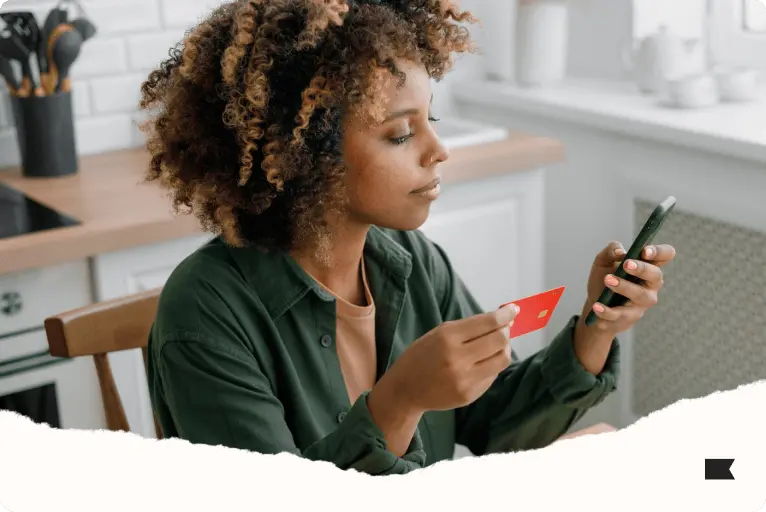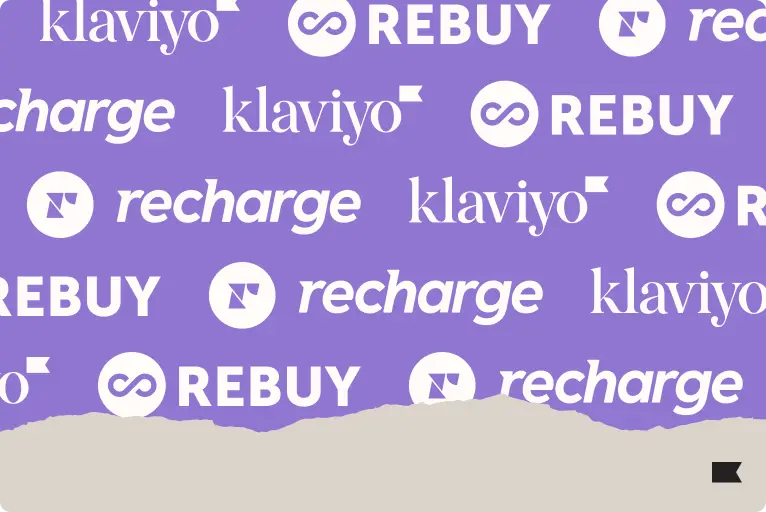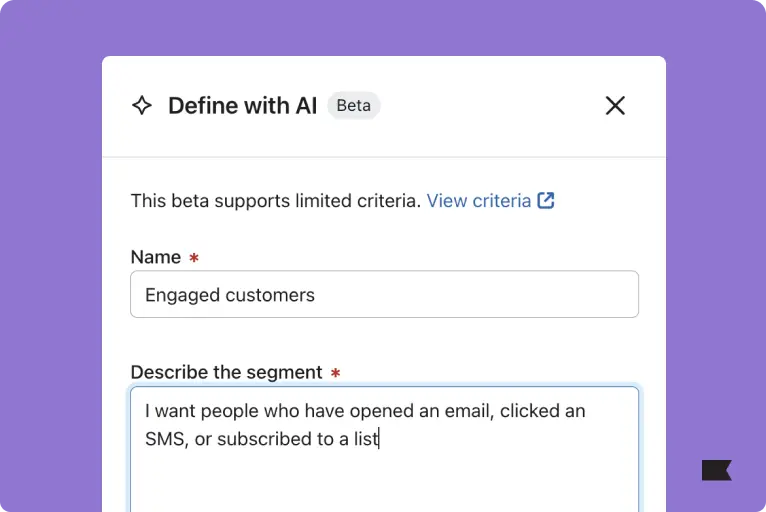
How to profitably increase email & SMS frequency: examples from Aura Bora & Linksoul

With email and SMS marketing, it’s easy to worry you’re sending too much.
Owned marketing is about respecting your access to the inbox, so it might seem counterintuitive that increasing frequency is a best practice for customer retention.
But as long as you’re properly segmenting your lists, increasing your campaign volume to existing customers—those who are fans of your brand to begin with—can be a great way to encourage repeat purchases and increase customer lifetime value.
During OWN IT, Klaviyo’s virtual ecommerce summit, Sriya Karumanchi, director of marketing at Catbird, said, “Our loyalty strategy is focused on how many more people we can shift into 3x purchasers within a calendar year.”
Our loyalty strategy is focused on how many more people we can shift into 3x purchasers within a calendar year.
That shift from first-time buyer to 3x purchaser requires a concerted omnichannel marketing strategy that’s supported by experimentation and testing—which, surprisingly, can yield results that support sending more, not less.
To help you formulate your own high-volume strategy, we’re highlighting 3 real-life examples from Klaviyo users who saw great results when they started sending more to their customers.
Aura Bora increases brand-focused emails and exceeds forecasts
After BFCM 2022, sparkling water brand Aura Bora cut their spend on top-of-funnel performance marketing by more than 50%. They were headed into their winter off-season and couldn’t justify the expense.
The brand shifted their focus from customer acquisition to email retention strategies, with the goal of keeping customer relationships strong until their peak sales season between Memorial Day and Labor Day.
Testing showed that their audience maxed out at 15 campaigns per month, plus ecommerce automations.
Aura Bora began experimentation with one question: How many emails could they send per month without losing subscribers or engagement?
Testing showed that their audience maxed out at 15 campaigns per month, plus ecommerce marketing automations.
They decided to try out a high-frequency approach, sending fewer product emails while doubling their number of brand emails. These evergreen, brand-first campaigns opted for quirky language over product highlights or up-selling, experimenting with self-aware CTAs like “shop… now?” and copy like, “This is what happens when you leave the interns in charge.”
Cameron Faist, VP of growth at Aura Bora, says revenue per user was “incredible,” substantially exceeding forecasts.
How you can experiment with brand content for customer retention
If you want to experiment with brand campaigns but quirky copy doesn’t fit your tone, start with a simple truth: People like to learn new things. Educational content is a foundational strategy for strengthening customer relationships with your brand.
For example, wellness brand Nuun noticed that a certain group of athletes typically bought only their endurance products. When the team began sending that group of customers strictly endurance-related content, it helped drive a 950% increase in website traffic from emails and an 820% increase in revenue generated from email marketing YoY.
Brand-focused educational content doesn’t need to be bland. Here’s what it can look like in practice:
- Creative post-purchase care and maintenance videos
- User-generated content
- Editorial features that interview customers
- Quizzes and surveys
- SMS messages that request feedback—because learning goes both ways
Linksoul boosts SMS frequency and reduces unsubscribes
Apparel brand Linksoul was an early adopter of SMS marketing, and their customers took to it immediately: just weeks after launch, they had 20K subscribers.
But their previous SMS marketing provider made it difficult to segment those subscribers, so they weren’t able to personalize messages as much as they wanted to.
After they consolidated their SMS marketing with their email marketing in Klaviyo, Linksoul wanted to start sending more—but even with new ways to split their list, ecommerce manager Brandi Cantrell worried this would annoy customers.
Now we’ve got a text in almost all of our flows, and our overall flow revenue increased 82% last year. The majority of that flow revenue came from SMS.
As it turns out, ramping up to weekly SMS sends actually reduced unsubscribes, in part because they could target sends based on engagement and purchase history
And after consolidating SMS and email, Linksoul was able to insert texts into existing email flows. “Now we’ve got a text in almost all of our flows, and our overall flow revenue increased 82% last year,” Cantrell says. “The majority of that flow revenue came from SMS.”
How you can use SMS and email together to personalize flows
To prevent people from receiving messages in a channel they don’t prefer or haven’t consented to, use “conditional splits” in your flows to send subscribers down channel-specific paths.
To avoid sending too many text messages, reserve SMS in flows for time-sensitive communications. If someone doesn’t act on a text message within the first 24 hours, follow up via email. This is how you can use flows to increase SMS frequency—without annoying your subscribers.
Send more without sacrificing quality
Important reminder: It’s never a sound strategy to send more messages for the sake of it.
High-volume campaigns only work with a granular segmentation strategy that ensures you’re sending more to the right people. This is how you can safely send more email and SMS, because your content is personalized to behavior.
But as your business grows, segmentation becomes more of a challenge. The larger the list, the more ways to slice and dice your audience—and soon you’re missing whole constellations of opportunities for revenue.
Now, AI can help your brand capture those segments.
With Klaviyo’s new Segments AI, you don’t need to spend as much time digging into your lists to find great segments. You can just describe the customers you want to reach, and in seconds, you’ll have a targeted segment based on whatever need you have.
Heads up: All customers now have access to Klaviyo AI.
Related content
- How to set up compelling email marketing campaigns to supplement your automations: 6 tips with examples
- From inbox to revenue: 3 brands share email marketing best practices to accelerate growth
- Win-back email examples: strategies for rekindling customer relationships

Related content

Discover 4 proven ways to reduce cart abandonment and recover lost sales. Learn how to build trust, streamline check-out, and personalize abandoned cart flows to convert more shoppers.

Looking for the best Shopify apps for marketing and customer service? Klaviyo, Rebuy, and Recharge together create a high-performing tech stack that revenue and customer retention.

Learn 6 ways brands use AI in marketing automation to target audiences, create content, personalize, predict churn, benchmark, and manage reviews.